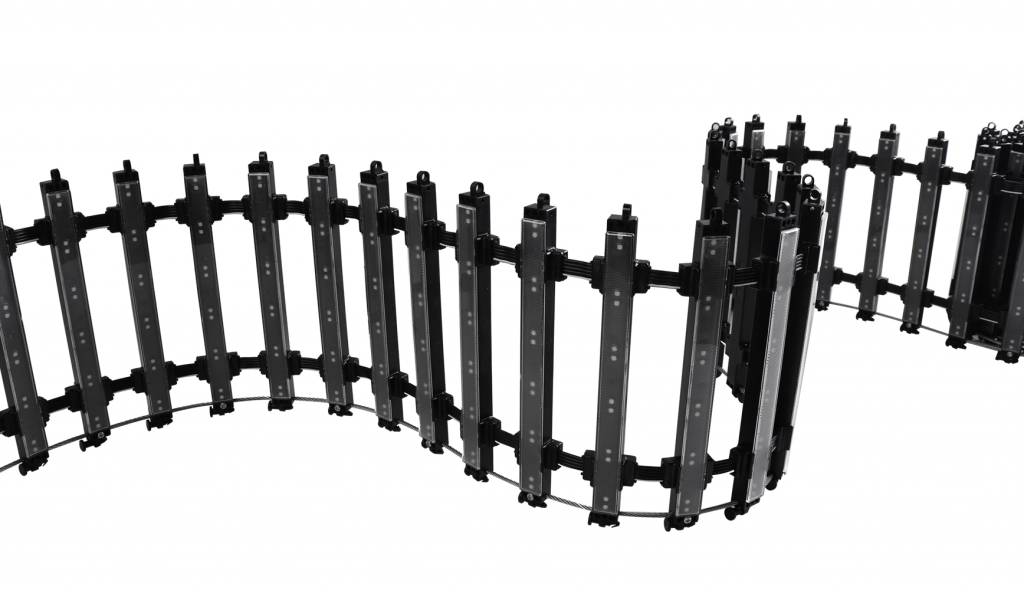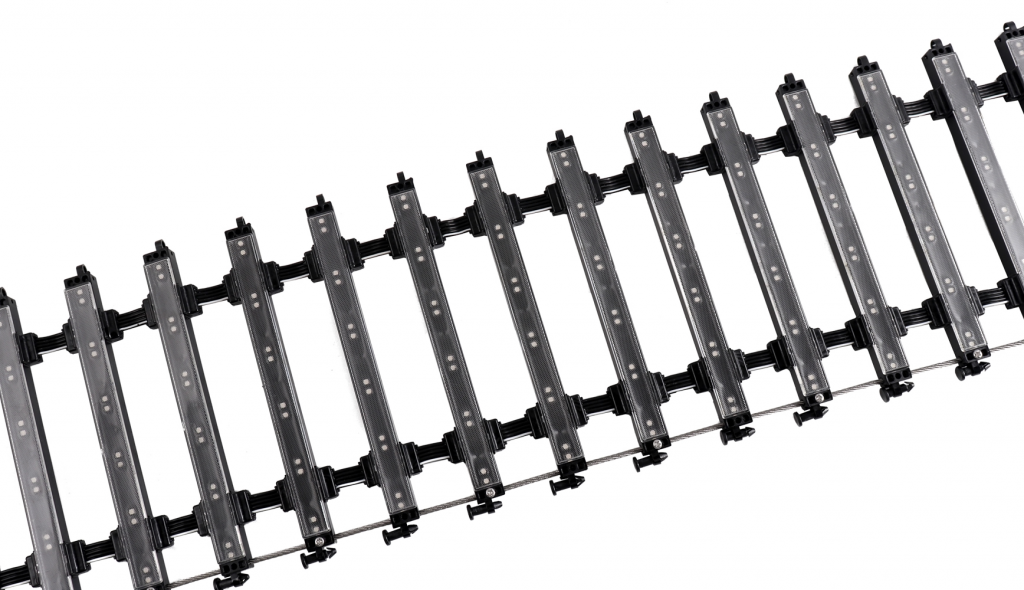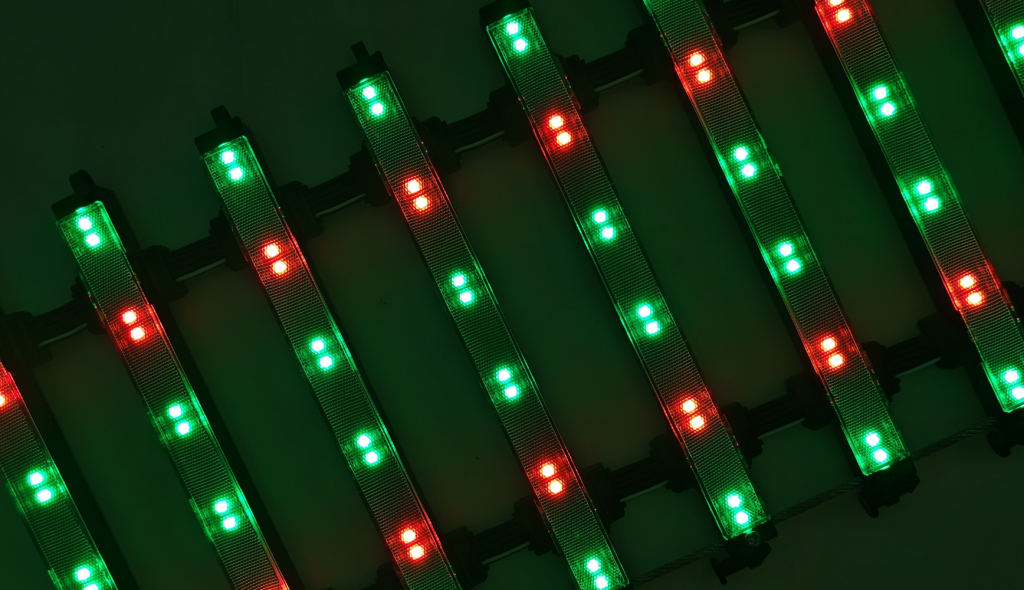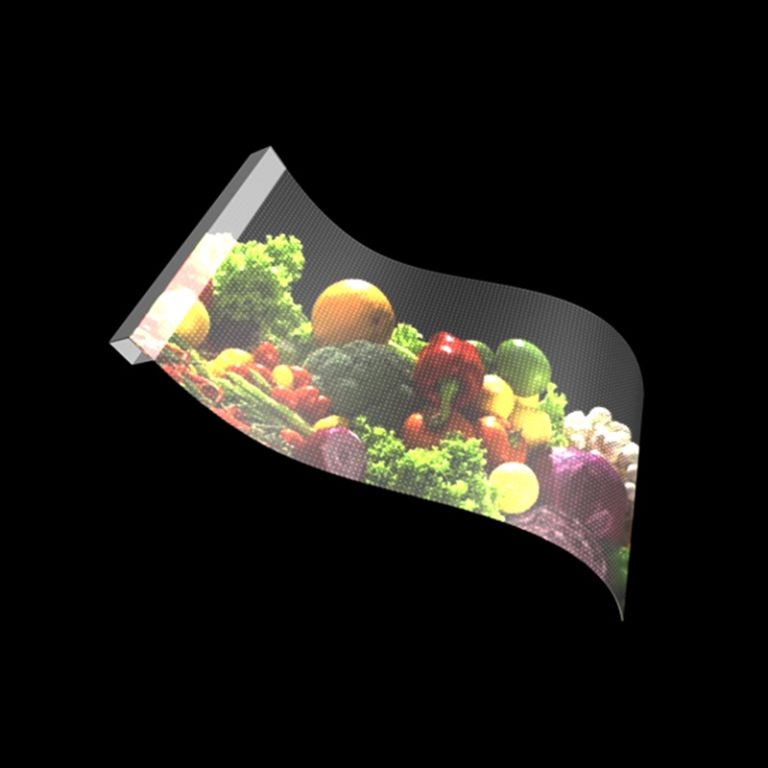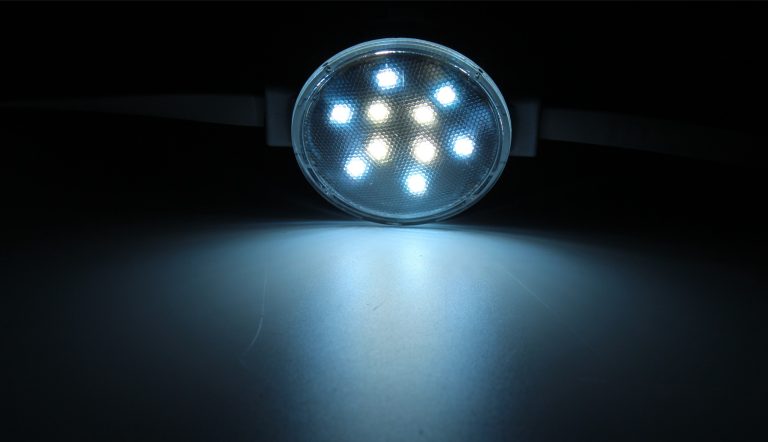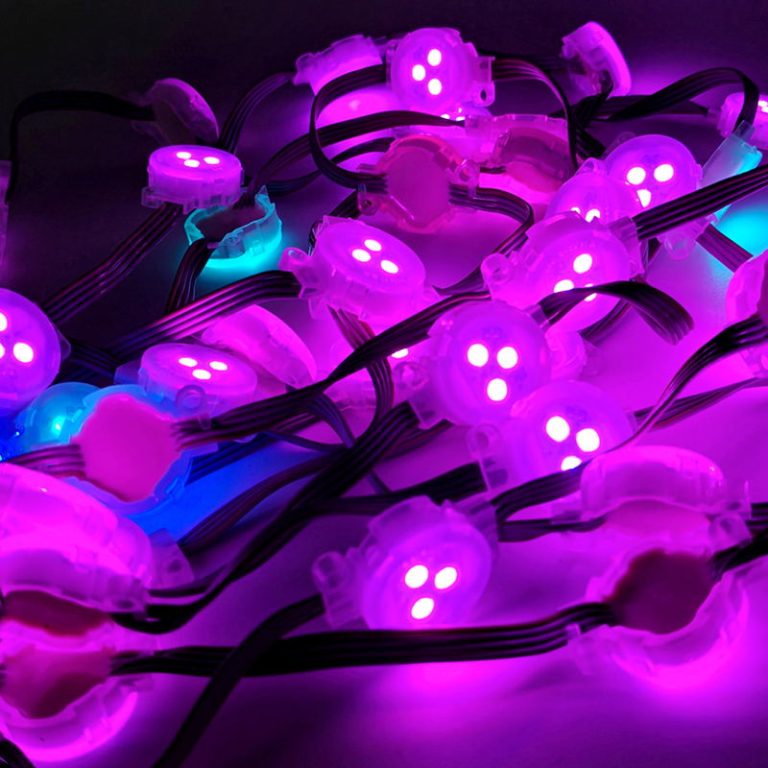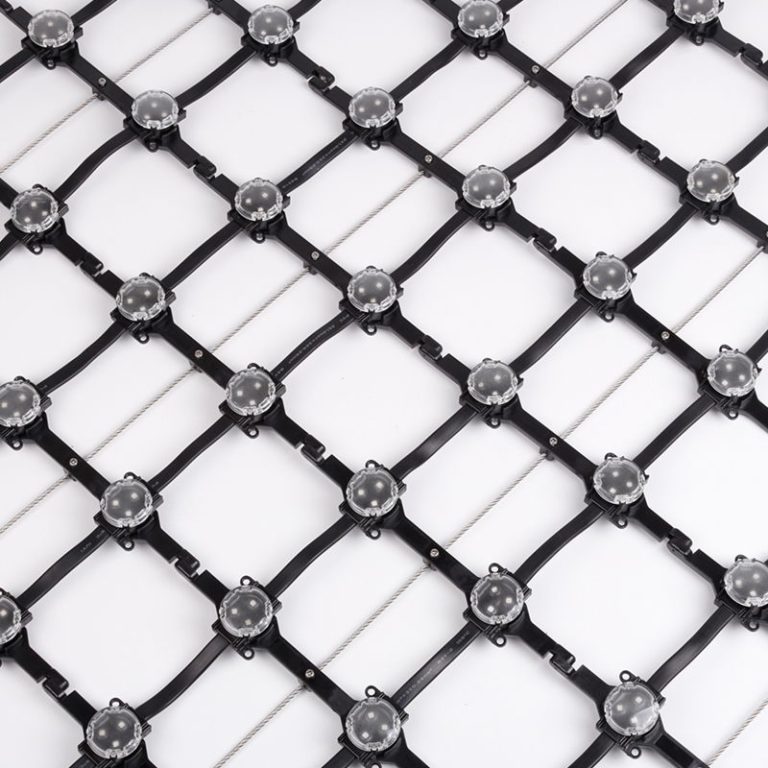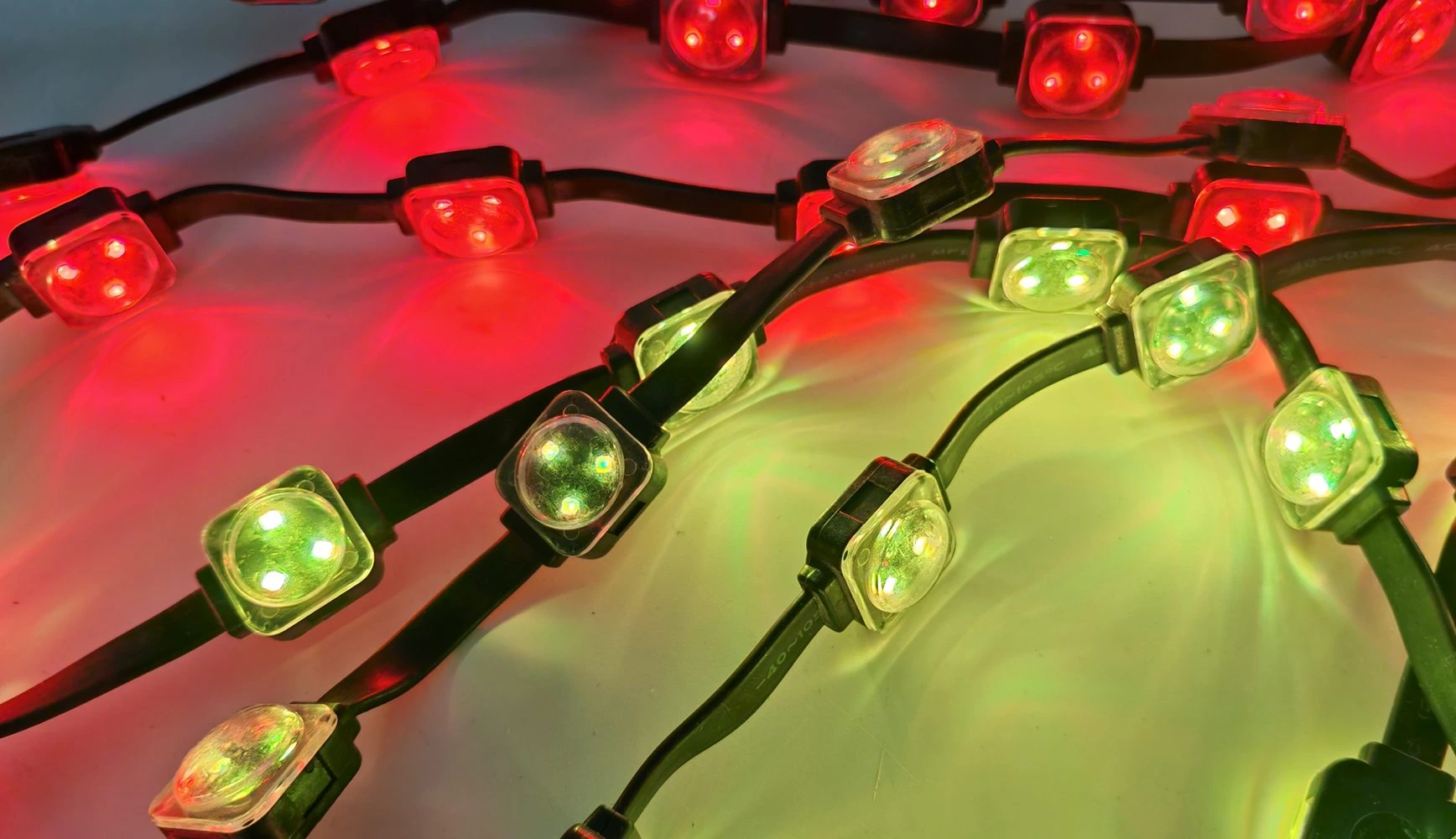
Picture this: It’s dusk in a bustling city like Shanghai, and the facade of a sleek high-rise hotel flickers to life. Not with a flat, uniform glow, but with thousands of tiny points of light dancing in sync—forming waves of color that mimic the nearby river’s flow. Pedestrians stop, phones out, capturing the show. This isn’t some high-budget spectacle from a movie set. It’s a real installation using source lumineuse ponctuelle clustering, turning a standard building into a nighttime landmark. For architects, developers, and lighting designers tackling media facades, moments like these highlight the power of smart choices. But with options like large format displays pulling equal attention, how do you pick? In this post, we’ll break it down—comparing the two technologies side by side, drawing on industry insights, and sharing practical tips to match the right one to your project.
Media facades have exploded in popularity. The global facades market, valued at around $259 billion in 2024, is on track to double to $485 billion by 2033, driven by demands for energy-efficient, eye-catching urban designs. Whether you’re outfitting a corporate tower or a retail complex, the goal is the same: create impact without breaking the bank or the grid. Let’s dive in.
What Is Point Light Source Clustering?
Point light source clustering starts with the basics: individual LED modules, each a self-contained beacon of light. These aren’t your average bulbs. Think compact units—say, 20mm to 100mm in diameter—packed with high-brightness chips like SMD3535 or SMD5050. Clustered together, they form patterns across a surface, controlled via DMX or TTL protocols for dynamic effects.
At its core, this tech shines in flexibility. Each point operates independently, so you can space them 50mm apart for dense pixelation or stretch to 125mm for broader coverage. Power them at low voltages like 12V or 24V, and you’ve got IP67-rated units that shrug off rain and dust. Lifespans? Over 30,000 hours, with luminous angles up to 180 degrees for even spread.
How Clustering Works in Practice
Installation is straightforward. Drill holes or use profiles to mount them on facades, then wire to a controller. Software lets you program sequences—from subtle gradients to full-on animations. In one recent urban project, clusters outlined a bridge’s curves, using just 0.75W per unit to hit 18 lumens of RGB output. No heavy panels. Just pinpoint precision.
Standout Features for Facade Pros
- Modularity: Swap out a single faulty light without tearing down the whole setup.
- Low Heat Output: Runs cool, ideal for tight urban installs where ventilation is a headache.
- Scalability: Start small on a single wall, expand to multi-building links without redesign.
It’s tech that feels tailor-made for irregular shapes—think undulating glass fronts or heritage stonework.
Breaking Down Large Format Displays
Shift gears to large format displays, and you’re looking at seamless LED panels—think video walls scaled up for buildings. These are full matrices of pixels, often with pitches as tight as 2.5mm, delivering video-quality resolution from afar. Modules snap together like giant Legos, forming screens that can span stories high.
Powered by denser arrays, they pull more juice—up to 800W per square meter in high-bright setups—but deliver unmatched clarity. Refresh rates hit 3840Hz, smoothing motion for live feeds or ads. Weatherproofing? Solid at IP65, though not always as rugged as clustered points in extreme salt spray.
The Tech Behind the Screen
Each panel integrates drivers, receivers, and cooling right in. Hang them via magnets or clips, and you’re broadcasting in minutes. For a 10×5 meter facade, you’d daisy-chain 50 modules, syncing via fiber optics. Brightness tops 5,000 nits, cutting through daylight haze.
Why Designers Turn to Them
Large formats excel in controlled environments. A stadium jumbotron? Perfect. They handle 4K content effortlessly, with color uniformity that clustering struggles to match up close.
Yet, rigidity is the trade-off. Curved surfaces? Not without custom bends, which jack up costs.
A Side-by-Side Look: Clustering vs. Large Format
No fluff—here’s how they stack up. We’ve pulled from real installs and specs to keep it grounded.
| Aspect | Point Light Source Clustering | Large Format Displays |
|---|---|---|
| Resolution | Variable (50-125mm pitch); great for patterns from 10m+ | Fixed tight pitch (2.5-10mm); sharp video from 5m |
| Flexibilité | High—adapts to curves, holes, any surface | Medium—flat or gentle curves only |
| Installation Cost | $50-150/sq m (modular, low labor) | $200-500/sq m (wiring, rigging intensive) |
| Energy Use | 10-50W/sq m; 80% less than neon | 200-600W/sq m; efficient but higher draw |
| Entretien | Easy spot fixes; 30k+ hour life | Panel swaps needed; similar lifespan |
| Best Viewing Distance | 20m+ for full effect | 5-50m; versatile but glare-prone up close |
Data draws from industry benchmarks: Clustering saved 40% on a 2,000 sq m park install, per recent Asian projects, while large formats dominate 70% of flat commercial screens.
Real-World Scenario: Lighting Up a Curved Retail Hub
Fast-forward to a mid-sized retail center in Guangdong, China. The architect faced a dilemma: a facade with 15-degree bows and a $300,000 budget. Large format panels? They’d cost $450,000 just for the modules, plus custom framing to hug the curves—pushing timelines to six months.
Enter point light clustering. Teams installed 5,000 IP67-rated 30mm units at 62.5mm spacing. Total outlay: $180,000, wrapped in three weeks. Each point pulled 0.6W, totaling under 30kW for the whole face—slashing electric bills by 60% versus equivalent panels. The result? A facade pulsing with RGBW landscapes at night, drawing 20% more foot traffic. No seams. No fuss. Just light that followed the building’s flow.
Contrast that with a straight-shot office tower nearby. There, large formats won out—seamless 4K ads beaming from 100 sq m of panels. Crisp from the street, but at double the upfront hit.
These stories aren’t outliers. In a market where 60% of new facades prioritize sustainability, choices like these define success.
Key Factors to Weigh for Your Project
Deciding isn’t one-size-fits-all. Start with your facade’s story.
Budget and Scale Matter Most
Smaller projects—under 500 sq m—lean toward clustering. It’s cheaper to prototype and iterate. For mega-scales, like airport terminals, large formats justify the spend with broadcast-level impact. Factor in ROI: Clustering often pays back in two years via energy savings.
Design Dreams vs. Reality
Got waves or heritage quirks? Clustering hugs them without compromise. Flat modernism? Large formats deliver that monolithic punch. Always mock up in software—tools like Dialux can simulate both.
Long-Term Upkeep and Durability
Both techs hit 30,000 hours, but clustering edges out in harsh spots. Salt spray? Its glue-sealed builds resist better. Panels? They demand calibrated cleaning to avoid hotspots. And don’t forget warranties—aim for 3 years minimum.
In the end, it’s about harmony: tech that amplifies your vision, not fights it.
Spotlight on XinHe: A Reliable Partner in Point Light Solutions
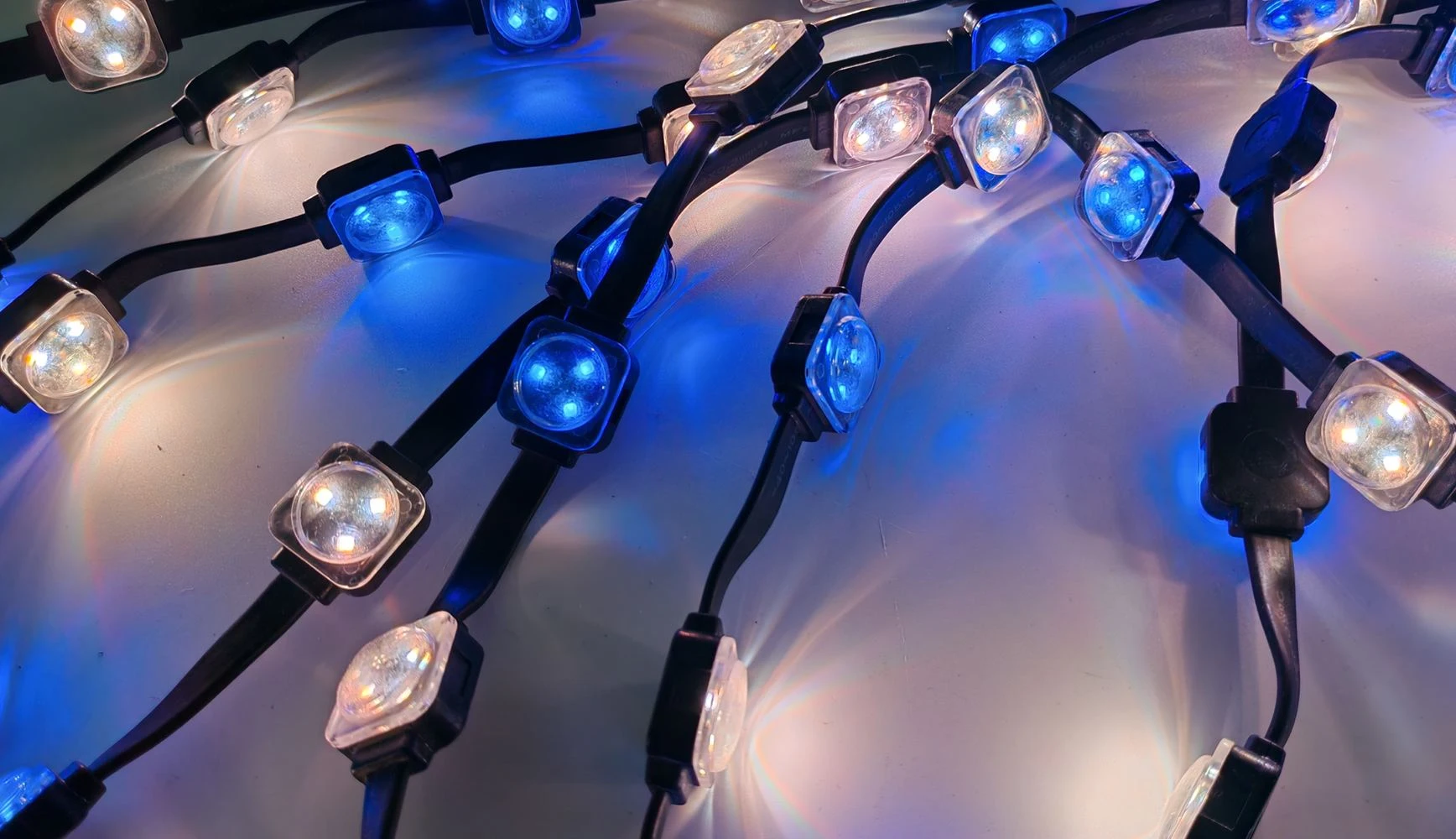
When it comes to sourcing top-tier point lights, Shenzhen XinHe Lighting Optoelectronics Co., Ltd. stands out as a go-to supplier. Founded in 2004, this Shenzhen-based innovator has built a 6,000 sq m factory humming with over 250 pros dedicated to LED point sources and mesh screens. Their Miracle Bean series—think waterproof 20-100mm units in RGB or single colors—powers everything from bridge outlines to hotel glow-ups, with over 80 patents backing the tech.
What sets XinHe apart? Hands-on customization. Need DMX-controlled clusters for a twisted facade? Their ODM team sketches schemes, budgets projects, and guides installs on-site. Certifications like ISO9001 and IP67 ratings mean reliability you can bank on. From the 2008 Beijing Olympics emblem to modern landscapes in parks like Xishuangbanna’s Manting Gate, their lights have lit up real-world wins. If clustering calls your name, XinHe’s got the beans to make it brew.
Wrapping It Up: Light the Way Forward
Media facades aren’t just about shine—they’re about stories told in color and motion. Point light source clustering offers nimble, budget-friendly paths for complex designs, while large format displays command attention with bold resolution. Neither is “better”; it’s about fit. As urban spaces evolve, blending these tools could be the next wave—hybrid setups merging clusters for edges and panels for centers.
Take a beat to map your needs. Sketch the surface. Crunch the numbers. Your facade deserves light that lasts. Ready to illuminate? Start with a consult— the right choice turns buildings into beacons.
Frequently Asked Questions
What makes point light source clustering a smart pick for irregular media facades?
Point light source clustering thrives on curves and contours, letting you mount individual LEDs flexibly without the rigidity of full panels. For a twisted retail front, it cuts install time by half and adapts seamlessly, as seen in bridge projects where spacing hits 50mm for crisp effects.
How do energy costs compare between point light source clustering and large format displays?
Clustering wins on efficiency, drawing 10-50W per square meter versus 200W+ for panels—translating to 60-80% lower bills over time. In a 1,000 sq m setup, that’s thousands saved yearly, especially with low-voltage 12V units that run cool and steady.
Can I mix point light source clustering with large format displays on one facade?
Absolutely. Many installs layer clustering for outlines or accents alongside central panels for video bursts. It balances cost and impact—clusters handle the creative edges, panels the high-res core—perfect for phased urban upgrades.
What’s the typical lifespan and maintenance for point light source clustering in outdoor use?
Expect over 30,000 hours from IP67-rated clusters, with spot-replaceable modules keeping downtime minimal. Salt-spray resistance and V-0 flame ratings make them tough for city weather; a quick annual check often suffices.
How does point light source clustering hold up for high-traffic viewing distances?
From 20 meters out, clustering delivers vibrant patterns without pixel gaps, ideal for street-level crowds. Tighter pitches like 62.5mm boost detail, making it a go-to for dynamic ads on building links.

